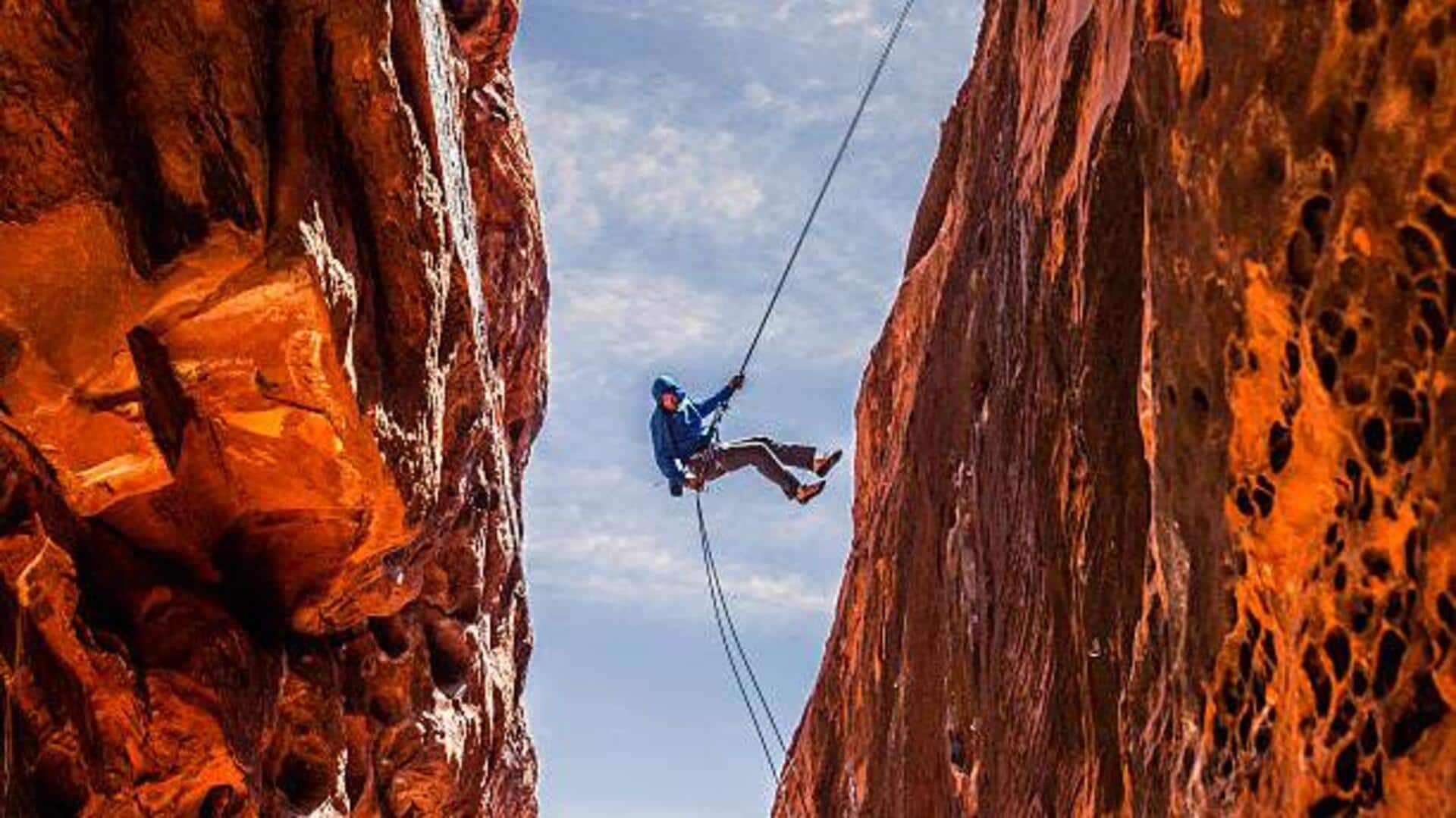
Rock climbing in desert canyons: A guide
What's the story
Rock climbing in desert canyons is an exhilarating experience, combining the challenge of climbing with the beauty of arid landscapes. These natural formations provide unique opportunities for climbers of all skill levels to test their limits and enjoy breathtaking views. From sandstone cliffs to rugged terrains, desert canyons offer diverse environments that require both physical and mental strength. Whether you're a seasoned climber or a beginner seeking adventure, exploring these remote areas can be both rewarding and challenging.
#1
Choosing the right canyon
Selecting the right canyon is crucial for a successful rock climbing experience. Consider factors like difficulty level, accessibility, and weather conditions. Some canyons are more suited for beginners with easier routes and better safety measures, while others present advanced challenges with technical climbs requiring specialized skills and equipment. Researching each canyon's unique features will help climbers prepare adequately and choose an appropriate location based on their experience level.
#2
Essential gear for desert climbing
Proper gear is essential when climbing in desert environments. Climbers should invest in high-quality shoes that offer good traction on rocky surfaces. A harness and helmet are also critical for safety during climbs. Additionally, carrying enough water is vital due to the dry conditions that can lead to dehydration quickly. Sunscreen and protective clothing help shield against harsh sun exposure, while climbing gloves can provide grip and protect hands from rough surfaces.
#3
Understanding weather patterns
Desert climates have unpredictable weather patterns that climbers should be aware of before heading out. Temperatures can vary widely between day and night, so it's important to dress in layers that can be adjusted as needed. Sandstorms may occur suddenly, reducing visibility and making climbing dangerous; checking forecasts regularly helps avoid these situations. Understanding local weather patterns enables climbers to plan their trips effectively, ensuring safety throughout their journey.
#4
Navigating challenges safely
Navigating challenges safely is key when rock climbing in desert canyons. Climbers should always assess risks before attempting any route, considering factors like loose rocks or unstable surfaces that could lead to accidents if not addressed properly beforehand. Practicing good communication skills within groups ensures everyone stays informed about potential hazards encountered along the way, allowing for quick decision-making when necessary without compromising overall safety standards expected during outdoor adventures like this one.